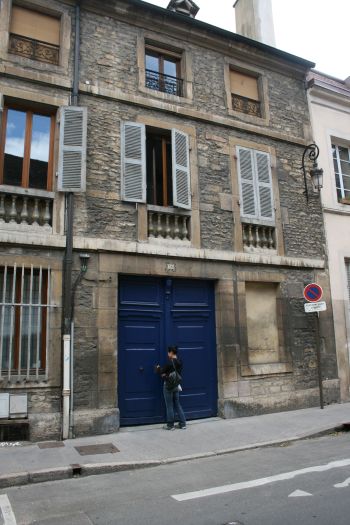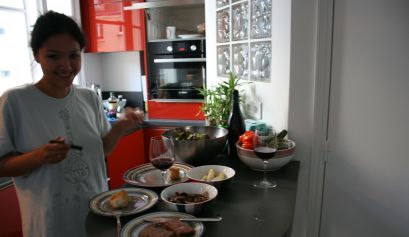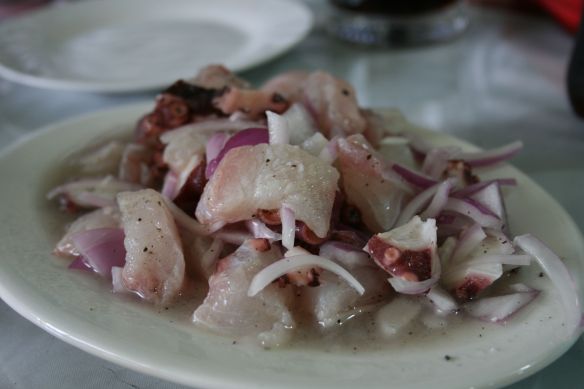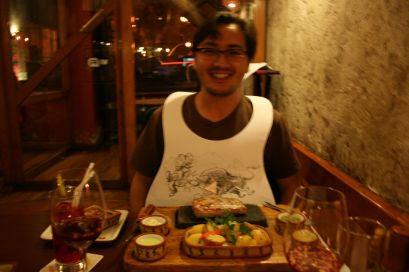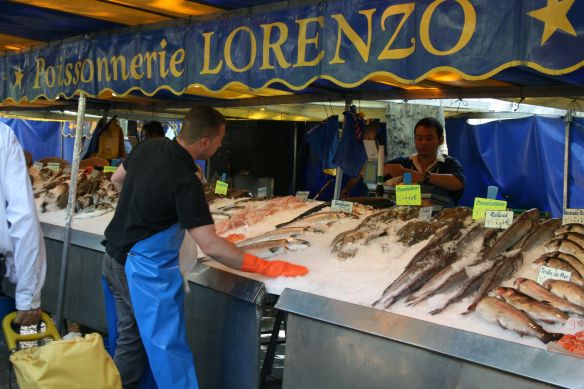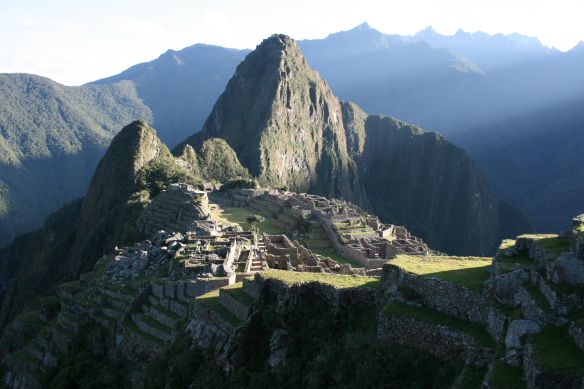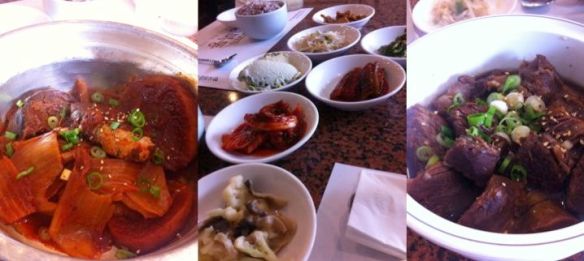
I love markets. Whether it’s the corner store, grocery store or a farmers market, you can learn so much about a culture from their markets. The best are the large, open air markets you find all over the world. Producers selling directly to consumers, you are immediately immersed in the sights, smells, and sounds of a place. We always try to stop by one in every new city we visit.
In Peru, we had the opportunity to visit some of the major markets in several different cities.

Bioferia Mercado (organic) at Parque Reducto in Lima, Peru
This market was the first and most “Californian” of the markets we visited in Peru. One of two all organic markets in Lima, this was a small but delicious market focused toward well-heeled locals and assortment of tourists. None of the markets we visited had many tourists, but this small market probably had the largest percent of tourists wandering by the stalls.
In total there were 15 or so stalls lined up in a row along the southern edge of Parque Reducto, with many offering ready to eat items such as coffee (our first taste of great, Peruvian coffee), rellenos, baked goods, and wraps. We waited patiently for a wrap from one vendor filled with fresh, organic vegetables and a hummus spread. Not especially Peruvian, perhaps, but delicious.
There were also a couple cheese vendors giving out tastes, and a handful of produce vendors with pristine looking potatoes, leafy greens, and carrots.
This doesn’t seem like the kind of place most of Lima gets their daily meals, but it’s a great stop and a good introduction to the produce and markets in Peru. There is plenty to munch along the way for a tourist without a kitchen and this might be the only place we found vegan food in abundance. I noticed a vegan couple nearly buying out a vendor – they must have been starved for good options.
If you are in Lima, this is a great stop and accessible for everyone. Open every Saturday from 8am to around 3pm on the south edge of Parque Reducto (corner of Reducto and Benavides).

Mercado Surquillo 2, Lima, Peru
This is a market we accidently came across while walking back toward Miraflores from lunch at Chez Wong. Never one to avoid a market, however uniniviting it may look, we dove in. Later we found out there are 2 Surquillo markets a few blocks from one another. One was recently renovated and has received recent support from Gaston Acurio. We did not visit that market, so we had our first experience with a true Peruvian market – for Peruvians.
By the time we got there around 4pm half of the stalls were closed. We wandered around taking in the sights and sounds and smells. Especially the smells – fresh seafood. When you are in a market like this you often worry about sanitation, and seafood might be an especially risky choice. But Lima has some of the best seafood I’ve had outside Japan and this market was no exception despite its shabby appearance. We waited for a plastic table to clear at a corner cevicheria that seemed busy and ordered a ceviche mixto, despite just having an exquisite ceviche a couple hours earlier at 4x the price. While maybe not quite at the level of Chez Wong, this ceviche beat the pants off anything I’d had in San Francisco, Acurio’s Le Mar included. One thing we noticed quickly here was the level of attention and care people took toward food preparation. This is a surefire sign of quality – they clearly cared about the product they were putting out. It took some time for us to get our ceviche, but we watched the woman diligently combine ingredient after ingredient, tasting along the way. It was probably the 10,000th plate of ceviche she’s made, for a couple of gringos who don’t know a thing about ceviche, but she put it together like it was for her family.

Mercado San Camilo, Arequipa, Peru
After having a taste of a real market at Surquillo, we couldn’t wait to visit this large, central market in Arequipa. After doing a bit of research and hearing that it “wasn’t in a nice area of town” and a bit off the tourist track, we were surprised to find it just 3 blocks from the main plaza. Tourists don’t like walking 3 blocks? In any case, there weren’t many tourists there, but it was very busy with locals bustling about, getting quick lunches, and buying produce for their homes.

The market quickly reminded me of some of the markets I’d been to in Asia, especially Hong Kong. It was organized by product, with sections for bread, fruit, dairy, fish, ready-made food and of course a whole section for potatoes. We wandered around the food stall perimeter spying for a good place to stop. Most places served soup of some type and would call out to us as we passed. A chifa (Chinese-Peruvian) stall looked good, but we had already eaten too much lomo saltado. We ended up first at a stall serving adobo and filled with Arequipa police officers. It was also next to a woman with “el major queso helado” and several local news stories posted to prove it. We couldn’t resist and had some dessert here of fresh queso helado (frozen cheese dusted with cinnamon). Finally, we stopped by a chicarron vendor that was busy and ate as much fried pork belly as we could muster before giving up.

Mercado San Pedro, Cusco, Peru
This was probably the largest market we visited, with nearly half of it dedicated to food stalls serving everything from fruit juice to rice and eggs to soup to what we ultimately ordered, malaya fritto. With no clue what that was until a few days later when our Peruvian guide explained it, the hunk of meat sitting on the counter just looked too good to pass up.

We sat in front of the woman who quickly offered us both soup to whet our appetite for the meat plate. Then she piled the malaya on top of rice along with a helping of lomo saltado for good measure. This is the kind of meal I travel for – honest, unique, and delicious. Not to mention the entire meal for both of us was about $3 USD.
Do you have a favorite market? In Peru or anywhere else? We’ll post soon about markets in New York and Paris.

